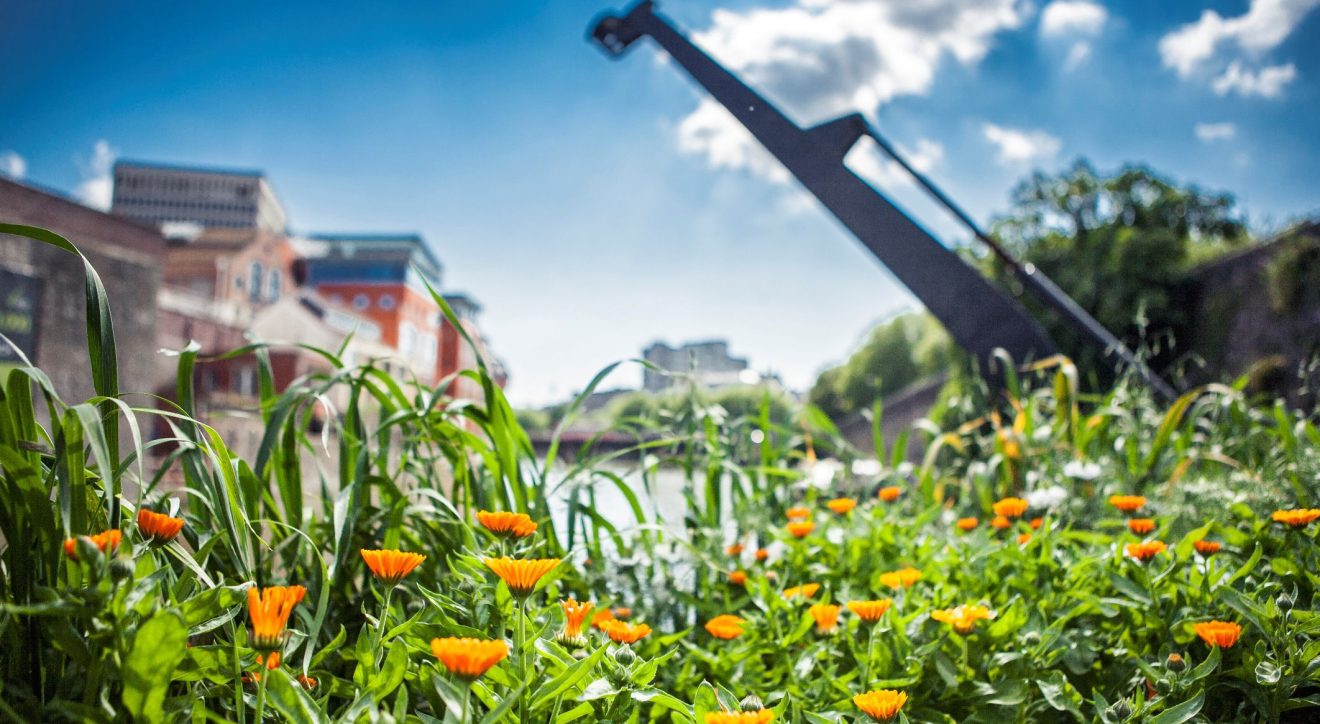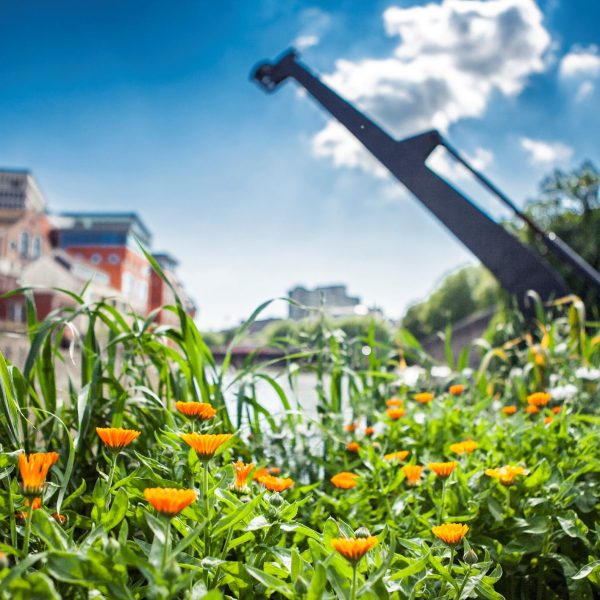
2012 - 2017
Seeds of Change: Floating Ballast Seed Garden
Synopsis
“At the end of the last Ice Age, the British Isles were home to only a handful of indigenous plants…. They have become host to a vast and varied collection of flowers, trees and shrubs …. The majority of these introductions occurred over two centuries, between 1735 and 1935” Sue Shephard, Seeds of Fortune: A Great Gardening Dynasty, 2003.
Seeds of Change is an ongoing investigation into ballast flora in the port cities of Europe by the Brazilian artist Maria Thereza Alves.

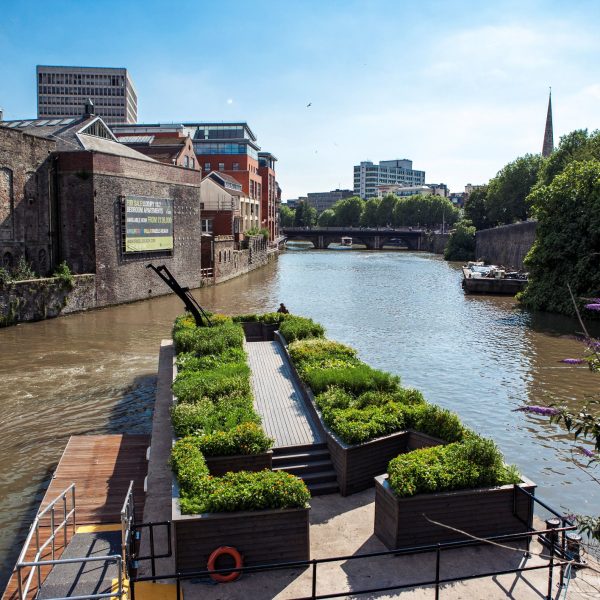
Ballast flora are plants that have become part of the British landscape but were brought to this country in the ballast of ships. Ballast was used to weigh down trading boats and included materials such as earth, stone and even trees. Between 1680 and the early 1900’s ships entering the port of Bristol unloaded many tons of ballast along the river and the harbour. This ballast often contained seeds from wherever the ship had sailed. Some of these seeds flourished and are still found growing around Bristol today. Ballast flora are symbolic of the complexity of world history, and the story of these plants has the potential to alter our understanding of a place. The Floating Ballast Seed Garden is designed to challenge our definitions of what constitutes our native landscape. It raises questions about the point at which an ‘alien’ species becomes ‘native’, and how we determine our sense of national identity and belonging.
The Floating Ballast Seed Garden
Maria Thereza Alves was originally invited to Bristol in 2007 to participate in the exhibition ‘Port City’ at the Arnolfini. During this period Alves researched the sites where ballast had been off-loaded around the Floating Harbour and River Avon. She dug up small samples of earth in which seeds were buried and these were germinated with the help of local individuals and groups (many of whom have family links to the port cities Bristol traded with). The resulting plants were displayed at the Arnolfini, reflecting the various routes travelled by Bristol merchants, together with Alves’ concept for a permanent Ballast Seed Garden on Wapping Wharf. In 2010 Arnolfini and Bristol City Council invited Alves back to Bristol to develop a design for the permanent ballast seed garden. An experimental test garden was established by the University of Bristol Botanic Garden where ballast species could be observed and in 2011 a disused concrete grain barge on the Floating Harbour was selected to create this garden.
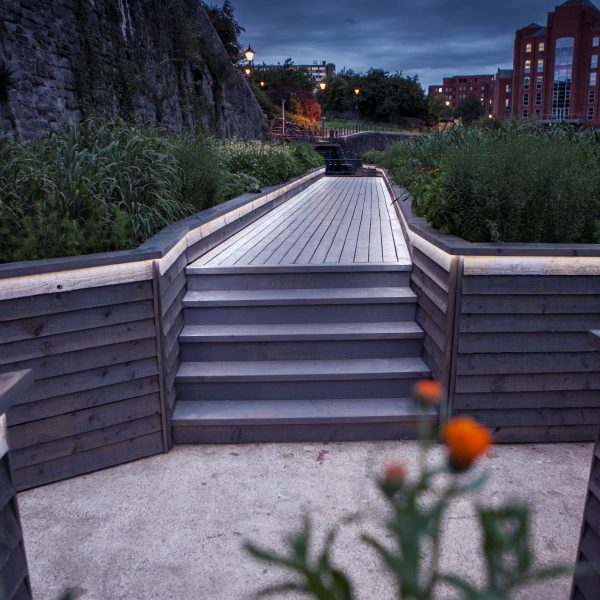

Description
Maria Thereza Alves
Maria Thereza Alves has recently exhibited in the Lyon Biennale, Guangzhou Maria Thereza Alves was born in Sao Paulo, Brazil in 1961. She researches social and cultural phenomena and was one of the co-founders of the Green Party in Brazil. Alves focuses on concepts that question social circumstances; concerning what we think we know, who we think we are and to look instead at where and how we actually are at this time. She attended the Cooper Union School of Art in New York City and in 2006 she was awarded a DAAD scholarship (Deutscher Akademischer Austauschdients/German Academic Exchange Service). Her work has been exhibited widely across Europe and North America. Recent exhibitions include the Paris Triennial, Guangzhou Triennial, (dOCUMENTA 13 in Kassel, the Sao Paulo Biennial, the Taipei Biennial, Manifesta in Trento, the Prague Biennal, the Athens Biennal and the Lyon Biennal where she received the Prix de la Francophonie.
Gitta Gschwendtner
Born in Germany in 1972, Gitta Gschwendtner moved to London in the early nineties to study design at Central Saint Martins, Kingston University and the Royal College of Art. Following graduation from the RCA furniture MA in 1998 she set up her independent design studio in London working on a diverse range of projects ranging from product, interior and exhibition design to public art installations for arts, cultural and corporate clients. Gitta’s studio focuses on conceptually rigorous, visually intriguing, functional design across several disciplines.
Other clients include British Council, Crafts Council, Design Museum, DuPont Corian, Geffrye Museum, Habitat, Innermost, Mathmos, Peugeot, Purves & Purves, Royal College of Art, Science Museum, Sony, Twentytwentyone, Victoria and Albert Museum and Wellcome Trust.
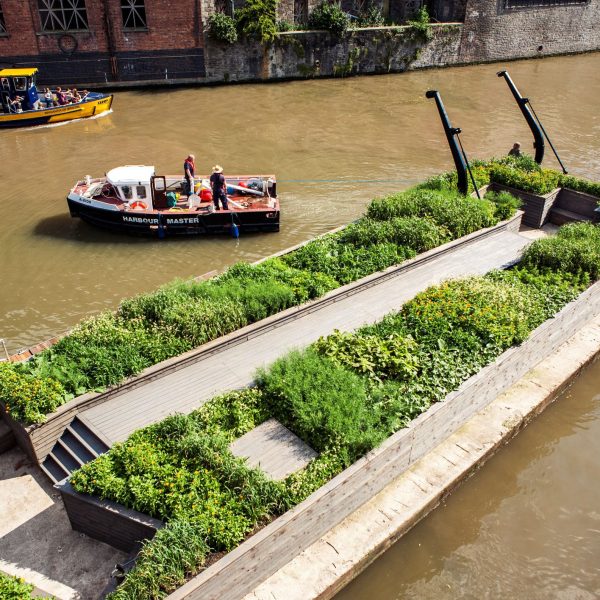
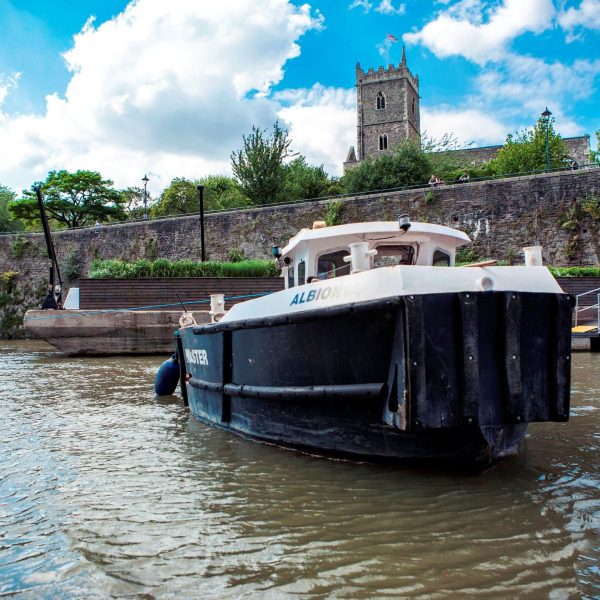
Seeds of Change: A Floating Ballast Seed Garden was part of the London 2012 Festival, a spectacular 12-week nationwide celebration from 21 June and running until 9 September 2012 bringing together leading artists from across the world with the very best from the UK. For further information see:
Arnolfini Ballast Seed Garden – a tour with Nick Wray from Paul Gilbert on Vimeo.
The garden was designed by German designer Gitta Gschwendtner, and seeks to give visitors an opportunity to experience the garden from various levels and perspectives. The raised bed structure, with its sunken paths and seating areas, immerses the visitor into the planting, while the elevated central pathway allows an overview of the entire garden. The architecture of the garden works with the structural constraints of the concrete grain barge, with an elevated planting bed that conceals its large hollow hold. Sustainability is an important aspect of the project. The project has brought a derelict barge back to life and both the garden’s irrigation system – using water from the floating harbour – and its lighting system are powered by solar panels.
The garden’s plants have been selected by the artist and the Curator at the University of Bristol Botanic Garden. The plants are mainly annuals but some perennial plants like Fig, Asphodeline and Squirting Cucumber are also grown. The annual plants require re-seeding every year, allowing for a changing plant layout within the large bed structure. The garden is planted in late May and blooms until September. Some of the plants have been grown by local schools and community groups who have developed their own ballast seed gardens in the city in a partnership between Arnolfini, the University of Bristol and Bristol City Council. Information on the gardens plant species can be found within the beds where plant species are labelled with their name, species, origin and individual properties.
The garden can be accessed by the public by boat or on one of the seasonal boat trips organised by the Arnolfini. For information visit: www.arnolfini.org.uk For general information about the garden please contact 0117 922 3064 or visit www.aprb.co.uk For further information about the plants please visit www.bris.ac.uk/botanic-garden
Seeds of Change: A Floating Ballast Seed Garden was commissioned and produced by Bristol City Council as part of the London 2012 Festival in collaboration with Arnolfini and the University of Bristol Botanic Garden The project was funded by the Ashley, Easton & Lawrence Hill Neighbourhood Partnership and Bristol City Council, with the kind support of Bristol Harbour Authority, and the Avon and Somerset Probation Trust Community Payback team.
Come and discover the edible plant life that grows on the Ballast Seed Garden, and turn it into delicious drinks and snacks for our tea party. Invent your own floral brew or herb infused mocktail and transform cupcakes into miniature gardens.
In 2015 artists Heather and Ivan Morison were commissioned to develop a playground for a special educational needs school in Bristol, working with the staff and pupils to find an alternative language of play and sensory stimuli through landscape and sculpture. Inspired by this project, families are invited to join artist Heather Morison as we encounter the wonders of plants in play, making and discovery.
Share your photos with us or tell us what you think @publicartbris #ballastseed
